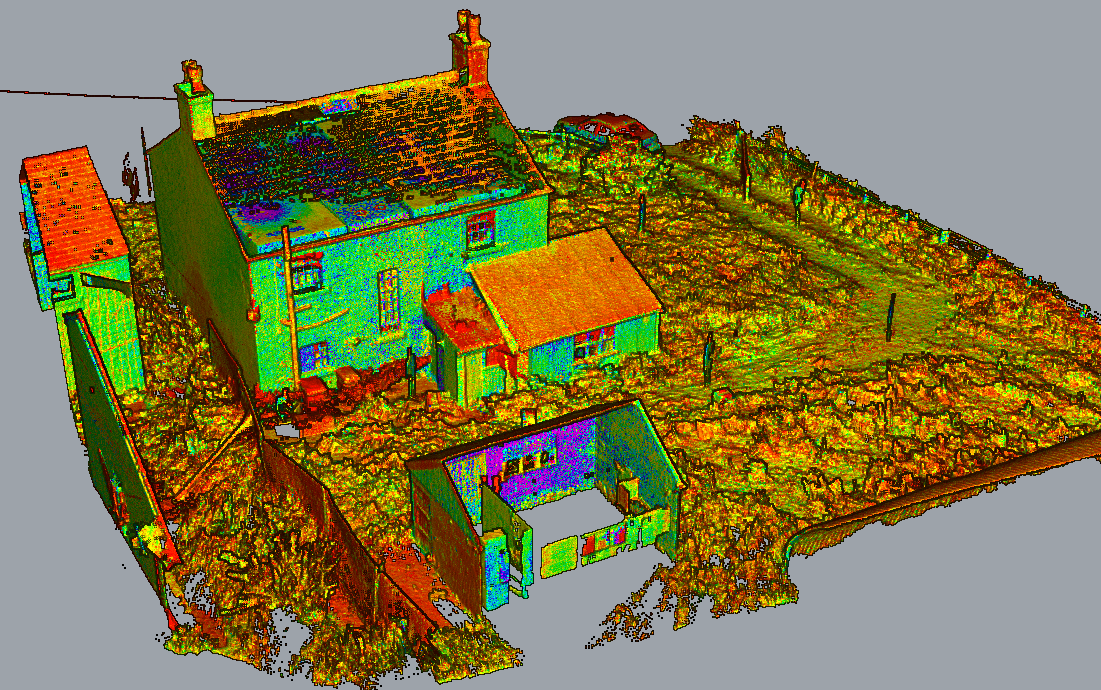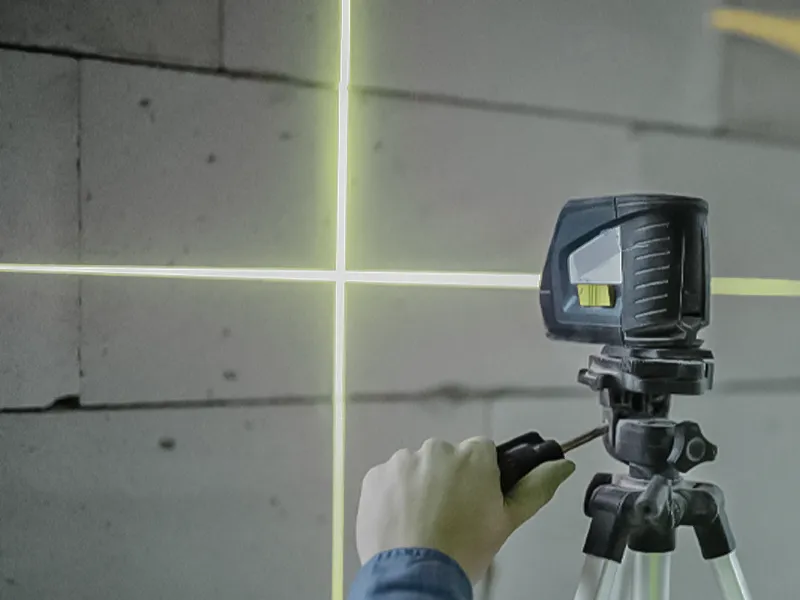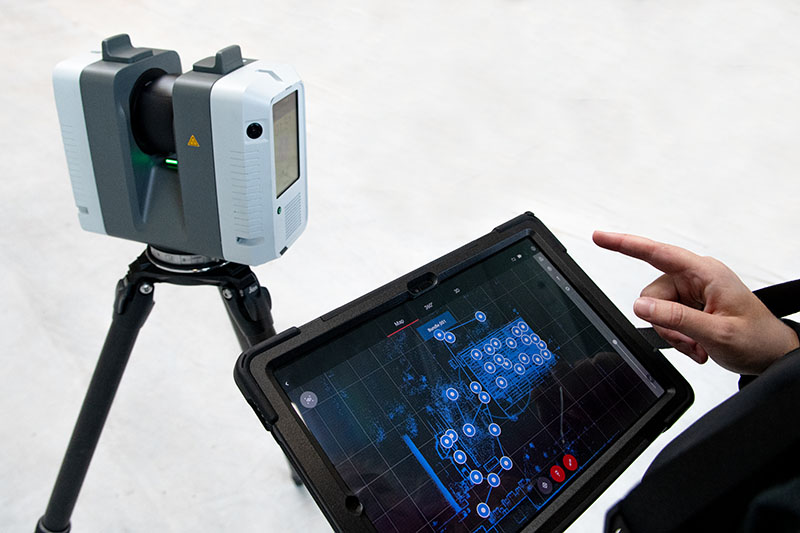Enhancing Manufacturing Processes: The Influence of 3D Laser Scanning on Quality Assurance
3D laser scanning technology is changing quality assurance in manufacturing. By supplying specific measurements and high-resolution data, it makes it possible for producers to identify variances from requirements effortlessly. This development not just enhances assessment processes however likewise enhances functional efficiency. 3D Scanning. The implementation of this technology comes with its very own set of challenges. Checking out these aspects discloses the more comprehensive effects for markets and the future landscape of production

Comprehending 3D Laser Scanning Technology
3D laser scanning technology has advanced significantly in current years, its fundamental principle remains straightforward: capturing the exact geometry of objects using laser beams. This technology employs laser light to determine ranges between the scanner and different points on a things's surface. The information gathered is then processed to create an in-depth 3D version, properly reflecting the dimensions and shapes of the checked object.
Commonly, 3D laser scanners can be categorized right into two main types: get in touch with and non-contact scanners. Call scanners physically touch the challenge gather dimensions, whereas non-contact scanners make use of laser beams to record data from a distance. The versatility of this technology allows its application across various sectors, including manufacturing, style, and building. Its capacity to create high-resolution versions facilitates quality assurance, reverse engineering, and rapid prototyping, ultimately boosting style precision and effectiveness in manufacturing procedures.
Advantages of 3D Laser Scanning in Manufacturing
As manufacturers seek to boost efficiency and precision in their processes, the advantages of 3D laser scanning have actually become increasingly evident. This cutting-edge technology permits extremely accurate and quick dimensions of intricate geometries, considerably minimizing the time required for top quality checks. By capturing comprehensive data, producers can identify discrepancies early in the production procedure, thus reducing waste and remodel prices.
Moreover, 3D laser scanning facilitates better layout validation, allowing engineers to contrast as-built conditions with initial specifications. This ability guarantees that any kind of inconsistencies are promptly resolved, enhancing general product quality. In addition, the technology supports the production of electronic doubles, which can be used for simulations and process optimizations. Because of this, makers not just raise their operational efficiency however additionally enhance their competitive benefit in the market. In general, the integration of 3D laser scanning stands for a transformative step toward attaining greater requirements in producing quality assurance.
Combination of 3D Laser Scanning Into Top Quality Control
Integrating 3D laser scanning into quality assurance processes improves the accuracy and efficiency of inspections throughout production. This modern technology allows suppliers to capture in-depth, high-resolution data of elements and settings up, permitting specific dimensions and contrasts versus layout specifications. By employing 3D laser scanning, organizations can determine inconsistencies from tolerances better, which is essential for preserving product integrity.

Real-World Applications and Study
Real-world applications of 3D laser scanning in manufacturing show its transformative impact across different sectors. As an example, aerospace business use this innovation to conduct precise inspections of parts, guaranteeing they fulfill rigid safety requirements. A significant instance entailed a leading aircraft supplier that utilized 3D laser scanning to enhance its quality assurance processes, substantially reducing evaluation times and errors.
In the vehicle field, makers have actually applied laser scanning to develop digital twins of their automobiles, enabling real-time modifications throughout manufacturing. One auto useful source company reported a 30% reduction in rework costs after incorporating this innovation into their assembly lines.
Moreover, in the consumer products sector, firms are using 3D laser scanning for rapid prototyping, permitting quicker versions and enhanced item styles. These applications show how 3D laser scanning not just enhances precision yet additionally improves effectiveness and development across several production domains.
Overcoming Challenges in Execution
Applying 3D laser scanning in manufacturing presents a number of challenges that companies need to browse to totally understand its advantages. One significant difficulty is the initial price of devices and software application, which can discourage firms from adopting this innovation. Additionally, incorporating 3D laser scanning into existing process calls for getting over resistance to transform amongst staff members, requiring thorough training programs to guarantee proficiency. Data monitoring also positions an obstacle, as the high volume of details produced by 3D scanning must be successfully processed and examined to acquire workable insights. Compatibility concerns with heritage systems might impede smooth integration, requiring potential upgrades or alterations. Attending to these obstacles is essential for makers intending to improve quality assurance and maximize manufacturing procedures. By establishing clear methods for training, financial investment, and information administration, firms can reduce these barriers and release the transformative capacity of 3D laser scanning in their procedures.
Future Fads in 3D Laser Scanning for Manufacturing
As manufacturing proceeds to advance, the combination of 3D laser scanning with enhanced automation is anticipated to change production procedures. Enhanced data analytics will play a vital role in optimizing operations and enhancing top quality control. These fads highlight the potential for greater effectiveness and precision in manufacturing environments.

Enhanced Automation Integration
Although the assimilation of automation in manufacturing has been gradual, the future of 3D laser scanning is positioned to accelerate this fad substantially. As making processes come to be significantly intricate, the demand for specific, real-time dimensions expands. 3D laser scanning modern technology provides automated data capture, Bonuses minimizing labor costs and lessening human mistake. This combination allows manufacturers to improve quality assurance processes, making it possible for rapid detection of deviations in production. Furthermore, the placement of 3D laser scanning with robotics and automated systems promotes seamless procedures, improving general effectiveness. As producers embrace these advanced modern technologies, they can anticipate better accuracy and efficiency, positioning themselves competitively in a rapidly advancing market. The synergy between automation and 3D laser scanning notes a considerable jump forward in making innovation.
Improved Data Analytics
The combination of automation has actually led the way for developments in data analytics within the domain name of 3D laser scanning. Makers are significantly leveraging sophisticated formulas and equipment knowing techniques to examine large datasets produced by laser scans. This improved information analytics capacity enables real-time monitoring of manufacturing processes, enabling the identification of defects and deviations better than typical methods. Predictive analytics can visualize prospective problems, greatly reducing downtime and enhancing overall performance. The capacity to imagine data in three dimensions gives deeper understandings into production operations, fostering much better decision-making. As 3D laser scanning technology proceeds to advance, the role of information analytics will come to be increasingly important in driving innovation and keeping affordable advantage in manufacturing.
Frequently Asked Concerns
What Industries Benefit one of the most From 3D Laser Scanning?
The industries that benefit most from 3D laser scanning include production, building and construction, aerospace, vehicle, and health care. These sectors utilize the innovation for precision measurements, quality guarantee, and efficient design processes, considerably enhancing general operational effectiveness.
Just How Does 3D Laser Scanning Compare to Typical Measurement Methods?
3D laser scanning uses greater precision and speed compared to standard measurement approaches. It catches comprehensive geometries promptly, lowering human error and facilitating far better analysis, which eventually enhances total top quality control in numerous industries.
What Is the Cost of Applying 3D Laser Scanning Technology?
The price of implementing 3D laser scanning innovation varies substantially, usually ranging from $10,000 to $100,000, depending upon Continue devices, training, and software application. Organizations needs to consider these expenses versus potential efficiency and quality renovations.
Exist Details Software Requirements for 3D Laser Scanning?
Yes, 3D laser scanning needs details software program, including information handling and modeling applications. Typical choices encompass CAD software application, factor cloud handling devices, and specialized applications that help with the combination and analysis of checked data for perfect outcomes.
The length of time Does a Regular 3D Laser Scanning Refine Take?
A regular 3D laser scanning procedure can take anywhere from a few mins to several hours, depending on factors like the dimension of the item, intricacy of the atmosphere, and needed degree of detail for accuracy.
3D laser scanning modern technology is transforming top quality control in production. 3D laser scanning innovation has actually developed substantially in recent years, its fundamental concept remains simple: capturing the specific geometry of objects using laser light beams. Incorporating 3D laser scanning into high quality control processes enhances the accuracy and performance of assessments throughout manufacturing (3D Scanning). 3D laser scanning modern technology provides automated data capture, reducing labor prices and decreasing human mistake. The expense of implementing 3D laser scanning technology differs significantly, commonly ranging from $10,000 to $100,000, depending on tools, training, and software application